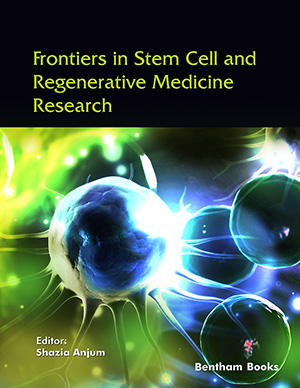
Abstract
Microtubule-Associated Protein Tau (also known as tau) has been shown to accumulate into paired helical filaments and neurofibrillary tangles, which are known hallmarks of Alzheimer’s disease (AD) pathology. Decades of research have shown that tau protein undergoes extensive post-translational modifications (PTMs), which can alter the protein's structure, function, and dynamics and impact the various properties such as solubility, aggregation, localization, and homeostasis. There is a vast amount of information describing the impact and role of different PTMs in AD pathology and neuroprotection. However, the complex interplay between these PTMs remains elusive. Therefore, in this review, we aim to comprehend the key post-translational modifications occurring in tau and summarize potential connections to clarify their impact on the physiology and pathophysiology of tau. Further, we describe how different computational modeling methods have helped in understanding the impact of PTMs on the structure and functions of the tau protein. Finally, we highlight the tau PTM-related therapeutics strategies that are explored for the development of AD therapy.
Keywords: Alzheimer’s disease, tau protein, post-translational modifications, phosphorylation, acetylation, methylation, nitration, glycosylation, glycation, truncation, deamidation, ubiquitination, sumoylation, computational modeling, therapeutic approaches.
[http://dx.doi.org/10.1007/978-3-030-56739-2_1]
[http://dx.doi.org/10.1016/j.jalz.2018.06.3063] [PMID: 30243772]
[http://dx.doi.org/10.1002/alz.13015] [PMID: 36872646]
[http://dx.doi.org/10.1016/j.vhri.2023.09.008] [PMID: 37972428]
[http://dx.doi.org/10.4103/1673-5374.335813] [PMID: 35662205]
[http://dx.doi.org/10.1002/ca.980080612] [PMID: 8713166]
[http://dx.doi.org/10.1007/978-0-387-79948-3_290]
[http://dx.doi.org/10.1080/13550280290100978] [PMID: 12476348]
[http://dx.doi.org/10.1016/j.nrl.2012.10.006] [PMID: 23246214]
[http://dx.doi.org/10.2174/156720508786898442] [PMID: 19075586]
[http://dx.doi.org/10.1093/brain/awab289] [PMID: 34515757]
[http://dx.doi.org/10.1126/sciadv.abm5029] [PMID: 35613261]
[http://dx.doi.org/10.3390/biom12020166] [PMID: 35204666]
[http://dx.doi.org/10.1007/s12035-021-02557-w] [PMID: 34757590]
[http://dx.doi.org/10.1007/s12035-022-02809-3] [PMID: 35359226]
[http://dx.doi.org/10.1021/bi061359o] [PMID: 17338548]
[http://dx.doi.org/10.1186/2051-5960-2-73] [PMID: 24927818]
[http://dx.doi.org/10.3389/fnagi.2017.00083] [PMID: 28420982]
[http://dx.doi.org/10.1016/j.nbd.2014.08.032] [PMID: 25220759]
[http://dx.doi.org/10.3389/fneur.2020.595532] [PMID: 33488497]
[http://dx.doi.org/10.2174/1567205014666170505095109] [PMID: 28474569]
[http://dx.doi.org/10.1002/ana.24001] [PMID: 25813842]
[http://dx.doi.org/10.2174/1871527313666140917095514] [PMID: 25230234]
[http://dx.doi.org/10.1016/0197-4580(95)00021-6] [PMID: 7566337]
[PMID: 17262984]
[http://dx.doi.org/10.2174/156720511796717221] [PMID: 21605037]
[http://dx.doi.org/10.2174/1567205017666200304085513] [PMID: 32129164]
[http://dx.doi.org/10.1186/alzrt259] [PMID: 25031639]
[http://dx.doi.org/10.1016/j.conb.2021.03.003] [PMID: 33892381]
[http://dx.doi.org/10.5483/BMBRep.2018.51.6.077] [PMID: 29661268]
[http://dx.doi.org/10.1038/s41581-019-0129-4] [PMID: 30858582]
[http://dx.doi.org/10.1016/0197-4580(95)00027-C] [PMID: 7566346]
[http://dx.doi.org/10.3389/fnins.2020.625348] [PMID: 33519371]
[http://dx.doi.org/10.1016/j.molcel.2008.07.002] [PMID: 18722172]
[http://dx.doi.org/10.1042/BJ20140372] [PMID: 24869773]
[http://dx.doi.org/10.1016/j.jalz.2016.02.011] [PMID: 27126545]
[http://dx.doi.org/10.1155/2013/940603]
[http://dx.doi.org/10.1007/s00702-004-0221-0] [PMID: 15517432]
[http://dx.doi.org/10.1016/S0014-5793(02)02228-7] [PMID: 11852060]
[http://dx.doi.org/10.1007/s12031-022-02002-0] [PMID: 35325356]
[http://dx.doi.org/10.3390/cells11213395] [PMID: 36359791]
[http://dx.doi.org/10.1016/j.tibs.2009.01.004] [PMID: 19282183]
[http://dx.doi.org/10.1016/j.bbadis.2004.06.017] [PMID: 15615646]
[http://dx.doi.org/10.1038/nn.4067] [PMID: 26192747]
[http://dx.doi.org/10.1016/j.neurobiolaging.2004.09.019] [PMID: 15748781]
[http://dx.doi.org/10.3389/fneur.2021.786353] [PMID: 35211074]
[http://dx.doi.org/10.3233/JAD-170176] [PMID: 28527217]
[http://dx.doi.org/10.1007/s00401-002-0591-z] [PMID: 12200631]
[http://dx.doi.org/10.1074/jbc.RA120.015882] [PMID: 33106314]
[http://dx.doi.org/10.3389/fnins.2018.00044] [PMID: 29467609]
[http://dx.doi.org/10.1016/j.molmed.2009.01.003] [PMID: 19246243]
[http://dx.doi.org/10.1016/S0165-0173(00)00019-9] [PMID: 10967355]
[http://dx.doi.org/10.1101/772046]
[http://dx.doi.org/10.1016/j.nbd.2006.01.006] [PMID: 16513361]
[http://dx.doi.org/10.3390/biom6010006] [PMID: 26751493]
[http://dx.doi.org/10.1097/00001756-199411000-00037] [PMID: 7533559]
[http://dx.doi.org/10.1007/BF02935561] [PMID: 1726645]
[http://dx.doi.org/10.1111/j.1471-4159.2006.03784.x] [PMID: 16606369]
[http://dx.doi.org/10.1172/JCI29715] [PMID: 17304350]
[http://dx.doi.org/10.1016/j.neuron.2010.11.030] [PMID: 21172610]
[http://dx.doi.org/10.1038/21650] [PMID: 10391244]
[http://dx.doi.org/10.1038/nature14658] [PMID: 26176913]
[http://dx.doi.org/10.1016/j.molcel.2011.03.005] [PMID: 21497122]
[http://dx.doi.org/10.1016/j.bbadis.2007.01.006] [PMID: 17317113]
[http://dx.doi.org/10.1093/brain/awl269] [PMID: 17012293]
[http://dx.doi.org/10.1111/j.1471-4159.1993.tb03603.x] [PMID: 8395566]
[http://dx.doi.org/10.1074/jbc.M709852200] [PMID: 18245083]
[http://dx.doi.org/10.1146/annurev-biochem-060608-102511] [PMID: 21391816]
[http://dx.doi.org/10.1073/pnas.0400348101] [PMID: 15249677]
[http://dx.doi.org/10.1128/MCB.24.4.1680-1690.2004] [PMID: 14749383]
[http://dx.doi.org/10.3389/fnmol.2020.590896] [PMID: 33343298]
[http://dx.doi.org/10.1074/jbc.M117.794602] [PMID: 28760828]
[http://dx.doi.org/10.1038/s41598-021-96627-7] [PMID: 34426645]
[http://dx.doi.org/10.1097/NEN.0b013e3181922348] [PMID: 19104446]
[http://dx.doi.org/10.1016/j.neuron.2010.08.044] [PMID: 20869593]
[http://dx.doi.org/10.1038/srep22685] [PMID: 26940749]
[http://dx.doi.org/10.1038/ncomms1255] [PMID: 21427723]
[http://dx.doi.org/10.1038/nm.3951] [PMID: 26390242]
[http://dx.doi.org/10.1126/science.2164259] [PMID: 2164259]
[http://dx.doi.org/10.1038/nsmb.2555] [PMID: 23624859]
[http://dx.doi.org/10.1371/journal.pone.0158470] [PMID: 27383765]
[http://dx.doi.org/10.1021/jz501457f] [PMID: 25206938]
[http://dx.doi.org/10.1186/s13024-016-0109-0] [PMID: 27356871]
[http://dx.doi.org/10.1093/hmg/ddt402] [PMID: 23962722]
[http://dx.doi.org/10.1096/fasebj.2018.32.1_supplement.lb34]
[http://dx.doi.org/10.1007/s00401-011-0893-0] [PMID: 22033876]
[http://dx.doi.org/10.1186/s12964-021-00732-z] [PMID: 33962636]
[http://dx.doi.org/10.3389/fmolb.2017.00056] [PMID: 28848737]
[http://dx.doi.org/10.1016/j.mcn.2022.103707] [PMID: 35231567]
[http://dx.doi.org/10.1186/s13024-021-00468-x] [PMID: 34215303]
[http://dx.doi.org/10.1007/s00401-016-1663-9] [PMID: 28083634]
[http://dx.doi.org/10.1186/1472-6807-8-26] [PMID: 18485199]
[http://dx.doi.org/10.1093/hmg/ddh083] [PMID: 14962978]
[http://dx.doi.org/10.1016/j.bbadis.2014.05.029] [PMID: 24905733]
[http://dx.doi.org/10.1111/j.1471-4159.2005.03181.x] [PMID: 15953362]
[http://dx.doi.org/10.1074/jbc.M512786200] [PMID: 16443603]
[http://dx.doi.org/10.1016/0896-6273(93)90063-W] [PMID: 8391280]
[http://dx.doi.org/10.1074/jbc.M110.110940] [PMID: 20466727]
[http://dx.doi.org/10.1016/j.jbc.2022.101766] [PMID: 35202653]
[http://dx.doi.org/10.1073/pnas.84.9.3033] [PMID: 3033674]
[http://dx.doi.org/10.1111/j.1750-3639.2011.00525.x] [PMID: 21919991]
[http://dx.doi.org/10.1007/s12035-022-02846-y] [PMID: 35503159]
[http://dx.doi.org/10.1016/j.yexcr.2006.10.028] [PMID: 17188679]
[http://dx.doi.org/10.1016/j.neulet.2021.136303] [PMID: 34695453]
[http://dx.doi.org/10.1074/jbc.M510127200] [PMID: 16464864]
[http://dx.doi.org/10.1073/pnas.1417548111] [PMID: 25378699]
[PMID: 35748395]
[http://dx.doi.org/10.1186/s40478-019-0663-0] [PMID: 30767764]
[http://dx.doi.org/10.1101/2022.11.11.516192]
[http://dx.doi.org/10.2174/156720510793611556] [PMID: 20678071]
[http://dx.doi.org/10.1242/jcs.113.21.3737] [PMID: 11034902]
[http://dx.doi.org/10.1002/j.1460-2075.1993.tb05665.x] [PMID: 7679073]
[http://dx.doi.org/10.1007/s11357-021-00408-z] [PMID: 34410588]
[http://dx.doi.org/10.1073/pnas.85.12.4506] [PMID: 3132715]
[http://dx.doi.org/10.1016/j.neuroscience.2022.01.002]
[http://dx.doi.org/10.3389/fnins.2015.00033] [PMID: 25717290]
[http://dx.doi.org/10.1074/jbc.RA120.012587] [PMID: 32737201]
[http://dx.doi.org/10.1073/pnas.2204179119] [PMID: 36067305]
[http://dx.doi.org/10.3390/biophysica2040039]
[http://dx.doi.org/10.3233/JAD-179942] [PMID: 29865059]
[http://dx.doi.org/10.1039/c0mb00337a] [PMID: 21327254]
[http://dx.doi.org/10.1016/S0014-5793(01)02421-8] [PMID: 11356201]
[http://dx.doi.org/10.1016/S0021-9258(17)31849-5] [PMID: 8063802]
[http://dx.doi.org/10.1016/j.bbadis.2015.12.002] [PMID: 26655600]
[http://dx.doi.org/10.1016/S0006-8993(99)01415-8] [PMID: 10366687]
[http://dx.doi.org/10.1038/s12276-021-00561-7] [PMID: 33568752]
[http://dx.doi.org/10.1093/cercor/bhh123] [PMID: 15238435]
[http://dx.doi.org/10.1074/jbc.M405527200] [PMID: 15364924]
[http://dx.doi.org/10.1016/j.ijbiomac.2022.02.178] [PMID: 35257729]
[http://dx.doi.org/10.1039/D1CS00127B] [PMID: 34889934]
[http://dx.doi.org/10.1021/bi047982v] [PMID: 15683253]
[http://dx.doi.org/10.1101/2022.05.28.493839]
[http://dx.doi.org/10.1016/j.brainres.2007.02.084] [PMID: 17395167]
[http://dx.doi.org/10.1021/bi051028w] [PMID: 16229489]
[http://dx.doi.org/10.1096/fj.05-5223com] [PMID: 16816118]
[http://dx.doi.org/10.1016/j.jbc.2021.101021] [PMID: 34339733]
[PMID: 34980260]
[http://dx.doi.org/10.1074/jbc.274.11.7368] [PMID: 10066801]
[http://dx.doi.org/10.1007/s00401-019-02012-0] [PMID: 31006065]
[http://dx.doi.org/10.1186/2051-5960-1-54] [PMID: 24252707]
[http://dx.doi.org/10.1523/JNEUROSCI.2143-06.2006] [PMID: 17050703]
[http://dx.doi.org/10.1002/prot.24544] [PMID: 24577753]
[http://dx.doi.org/10.3389/fneur.2013.00083] [PMID: 23847585]
[http://dx.doi.org/10.1002/prot.23210] [PMID: 22072628]
[http://dx.doi.org/10.1096/fj.08-121590] [PMID: 19074508]
[http://dx.doi.org/10.1091/mbc.8.2.353] [PMID: 9190213]
[http://dx.doi.org/10.1002/anie.201501898] [PMID: 25881502]
[http://dx.doi.org/10.1021/acschemneuro.1c00084] [PMID: 33877805]
[http://dx.doi.org/10.3389/fmolb.2021.801577] [PMID: 34966788]
[http://dx.doi.org/10.1021/acscentsci.1c00585] [PMID: 34963892]
[http://dx.doi.org/10.1016/j.bbagen.2022.130276] [PMID: 36372288]
[http://dx.doi.org/10.3389/fmolb.2021.624302] [PMID: 33816551]
[http://dx.doi.org/10.1002/anie.202112374] [PMID: 35107860]
[http://dx.doi.org/10.26434/chemrxiv-2022-5bs5r]
[http://dx.doi.org/10.1016/j.trci.2019.05.008] [PMID: 31334330]
[http://dx.doi.org/10.1016/j.nurt.2008.05.001] [PMID: 18625454]
[http://dx.doi.org/10.1126/science.adf8125]
[http://dx.doi.org/10.1172/JCI0215451] [PMID: 12417570]
[http://dx.doi.org/10.1006/abbi.1998.0813] [PMID: 9735171]
[http://dx.doi.org/10.1016/S0896-6273(00)81127-7] [PMID: 10595524]
[http://dx.doi.org/10.1021/bi981874p] [PMID: 10090741]
[http://dx.doi.org/10.1038/ni.1701] [PMID: 19295632]
[PMID: 9089387]
[http://dx.doi.org/10.1046/j.1471-4159.2002.01269.x] [PMID: 12472906]
[http://dx.doi.org/10.1016/S0168-0102(99)00026-7] [PMID: 10413323]
[http://dx.doi.org/10.1016/S0014-5793(02)02934-4] [PMID: 12123804]
[http://dx.doi.org/10.1016/S0896-6273(03)00259-9] [PMID: 12765608]
[http://dx.doi.org/10.1523/JNEUROSCI.5245-07.2008] [PMID: 18322105]
[http://dx.doi.org/10.1016/S0092-8674(00)80208-1] [PMID: 9108484]
[http://dx.doi.org/10.1073/pnas.0500466102] [PMID: 15867159]
[http://dx.doi.org/10.4088/JCP.08m04606] [PMID: 19573486]
[http://dx.doi.org/10.1186/s40345-016-0068-y] [PMID: 27900734]
[http://dx.doi.org/10.1074/jbc.M306268200] [PMID: 12928438]
[http://dx.doi.org/10.1007/s00401-005-1087-4] [PMID: 16228182]
[http://dx.doi.org/10.1111/j.1471-4159.2006.04139.x] [PMID: 17059563]
[http://dx.doi.org/10.1038/sj.bjp.0707471] [PMID: 17906685]
[http://dx.doi.org/10.1186/1756-0500-7-273] [PMID: 24779365]
[http://dx.doi.org/10.1007/978-1-4939-7404-7_13]
[http://dx.doi.org/10.1038/s41582-018-0013-z] [PMID: 29895964]
[http://dx.doi.org/10.1007/s00401-018-1911-2] [PMID: 30238240]
[http://dx.doi.org/10.1186/s40478-019-0664-z] [PMID: 30767766]
[http://dx.doi.org/10.3390/cells8030260] [PMID: 30893872]
[http://dx.doi.org/10.1093/brain/awx074] [PMID: 28430857]
[http://dx.doi.org/10.1126/science.1113694] [PMID: 16020737]
[http://dx.doi.org/10.1111/j.1743-7563.2012.01535.x] [PMID: 22897979]
[http://dx.doi.org/10.1111/acel.13081] [PMID: 31763743]
[http://dx.doi.org/10.1038/s41598-022-09763-z] [PMID: 35388084]
[http://dx.doi.org/10.1159/000488155] [PMID: 29669333]
[http://dx.doi.org/10.1111/jpi.12515] [PMID: 29907977]
[http://dx.doi.org/10.1038/nchem.2889] [PMID: 29359764]
[http://dx.doi.org/10.1016/j.tins.2006.07.003] [PMID: 16859759]
[http://dx.doi.org/10.3390/ijms19010325] [PMID: 29361800]
[http://dx.doi.org/10.1096/fj.05-5343fje] [PMID: 16464956]
[http://dx.doi.org/10.1007/s00109-004-0549-9] [PMID: 15168026]
[http://dx.doi.org/10.1159/000356596] [PMID: 24335345]
[http://dx.doi.org/10.1379/1466-1268(2001)006<0105:GTPOAC>2.0.CO;2] [PMID: 11599571]
[http://dx.doi.org/10.1038/nature01913] [PMID: 14508491]
[http://dx.doi.org/10.1016/j.chembiol.2004.04.008] [PMID: 15217612]
[http://dx.doi.org/10.1111/j.1460-9568.2008.06084.x] [PMID: 18294209]
[http://dx.doi.org/10.1093/hmg/ddi458] [PMID: 16368705]
[http://dx.doi.org/10.1074/jbc.M109.008177] [PMID: 19648118]
[http://dx.doi.org/10.1021/acsptsci.1c00251] [PMID: 35059567]
[http://dx.doi.org/10.1038/nchembio.96] [PMID: 18587388]
[http://dx.doi.org/10.1371/journal.pone.0035277] [PMID: 22536363]
[http://dx.doi.org/10.1021/acs.jmedchem.9b01090] [PMID: 31487175]
[http://dx.doi.org/10.1038/nchembio.797] [PMID: 22366723]
[PMID: 32625874]
[http://dx.doi.org/10.3390/ijms12095592] [PMID: 22016611]
[http://dx.doi.org/10.18632/oncotarget.27963] [PMID: 34084282]
[http://dx.doi.org/10.1038/s41467-022-32951-4] [PMID: 36114178]
[http://dx.doi.org/10.15212/AMM-2021-0001] [PMID: 35237768]
[http://dx.doi.org/10.1038/nrd.2017.155] [PMID: 28983098]



























